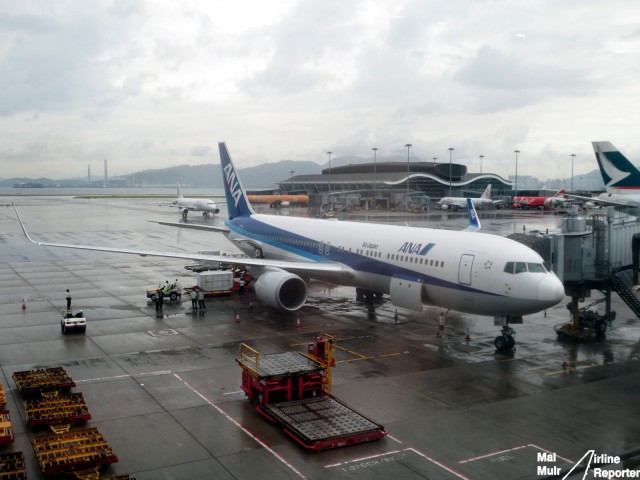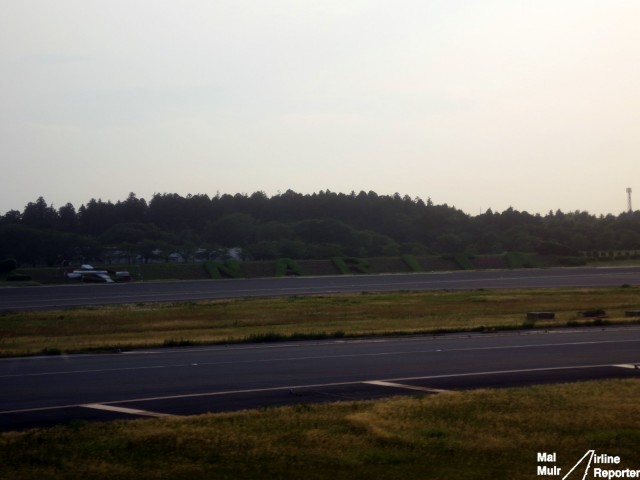
It is not hard to tell just where you are, and if the sign doesn’t help, perhaps all the ANA & JAL aircraft around are a clue – Photo: Mal Muir | AirlineReporter.com
This is the continuation of a multi-part series covering my trip from Seattle to San Jose to Narita to Hong Kong and back as a ANA Ambassador. My flight was provided by ANA, but all opinions are my own. First read: ANA Ambassador Report 1: San Jose to Tokyo on the 787 Dreamliner.
A majority of flights to Asia from the westcoast, require a connection through an intermediary stop. Cathay Pacific has their hub in Hong Kong, Asiana and Korean have their hubs at Incheon. However, four airlines have their hubs in Tokyo: Delta, United, All Nippon Airways (ANA) and Japan Airlines (JAL).
This means that on a good day you can see a variety of aircraft and flights in and out of Narita International Airport (NRT). This makes the airport not only nice for the general traveler, but also for the AvGeek. I recently was able to take a closer look at transitioning in NRT while on my way to Hong Kong (HKG).
On Saturday April 22nd, Japan Airline (JAL) started their first flight using a Boeing 787 Dreamliner. Flight JAL008 lifted off from Narita, Tokyo (NRT) and then were met with a crowd at Boston Logan (BOS). Not only is this the first route, using the 787 Dreamliner, to the US, it is also the first time the aircraft has been put on a brand new route.
JAL’s first Boston flight was 100% booked and about 98% filled for the rest of April, showing positive demand for the new route.
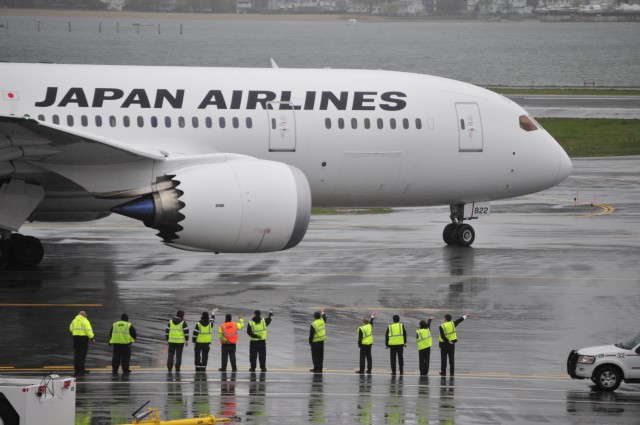
JAL's 787 at Boston. Image from JAL.
“We are honored to see the 787 Dreamliner begin its first commercial service to the U.S. with the launch of JAL’s Tokyo to Boston route,” said Boeing Japan president Mike Denton, who was on the flight. “The 787 brings new levels of flexibility to airlines in their network development, and this is exactly the kind of long-haul point-to-point route the 787 was designed to fly. Congratulations to JAL and all their passengers participating in this exciting, pioneering flight.”
JAL took delivery of their first two 787 Dreamliners on March 26th and have announced their plans to operate the aircraft also from Narita to San Diego.
According to Bloomberg, the airline is also looking at using the Dreamliner on flights to Madrid, Berlin and Dusseldorf. JAL is also considering the possibility of re-opening routes using the 787 that were not profitable with the larger Boeing 777 from Nagoya and Osaka’s Kansai airports.
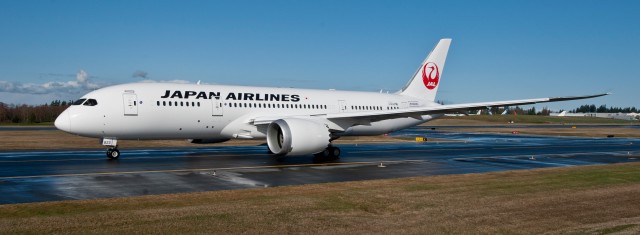
HI RES IMAGE (click for larger). JAL Boeing 787 Dreamliner at Paine Field. Photo by Boeing.
Japan Airlines (JAL) announced today that they plan to take official delivery of their first 787 Dreamliner this Sunday, March 25th, with a delivery ceremony to follow on the 26th. The aircraft is then scheduled to take off from Paine Field at about 4pm local time on Monday to head to Narita in Tokyo with JAL pilots at the controls.
The airline plans to start operating their first Dreamliner on their new Boston to Tokyo route, currently scheduled to start on April 22, 2012. JAL has also announced the intention of starting 787 service between San Diego and Tokyo later in the year.
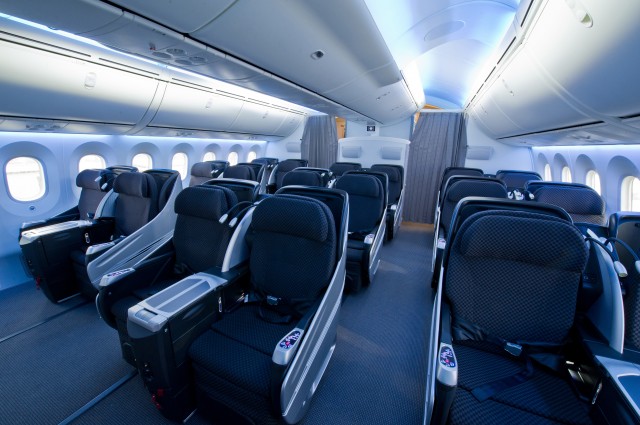
HI RES IMAGE (click for larger). Executive Class cabin on JAL's first Boeing 787 Dreamliner. Photo by Boeing.
JAL becomes the second airline to take delivery of a 787, but this aircraft will represent a few firsts: It will be the first one to be delivered with GEnx engines, the first to be commercially fly a route to the US and the first to be used on a brand new route (ANA’s 787s have replaced other aircraft on routes that already existed).
The first aircraft is configured in a two class layout, with 42 seats in business class and 144 seats in economy.
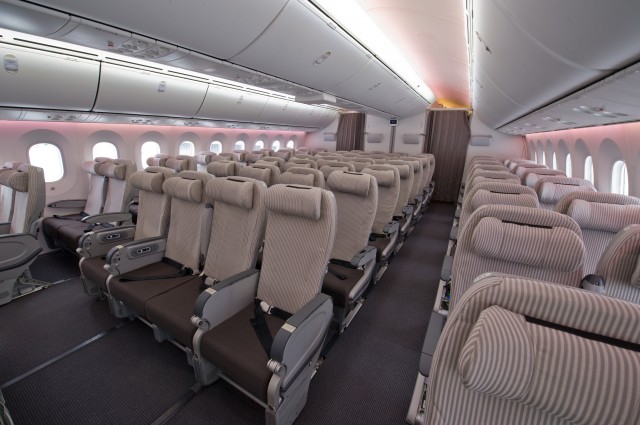
HI RES IMAGE (click for larger). The economy cabin inside JAL's first Boeing 787 Dreamliner. Photo by Boeing.
The business (or executive) class seats are in a 2-2-2 layout and provide about 60″ of seat pitch and a bit over 21″ of width. The seat will recline to about 171 degrees. The Economy class is configured in a 2-4-2 layout and will provide 31″ seat pitch and 18.5″ seat width.
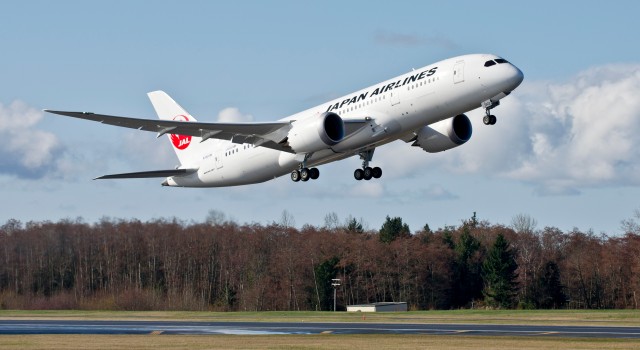
HI RES IMAGE (click for larger). JAL's Boeing 787 Dreamliner taking off at Paine Field. Photo by Boeing.
JAL’s new in-flight entertainment system, called SKY MANGA, will also debut on the aircraft. The interior has a very different looking atmosphere than ANA’s Dreamliner cabin.
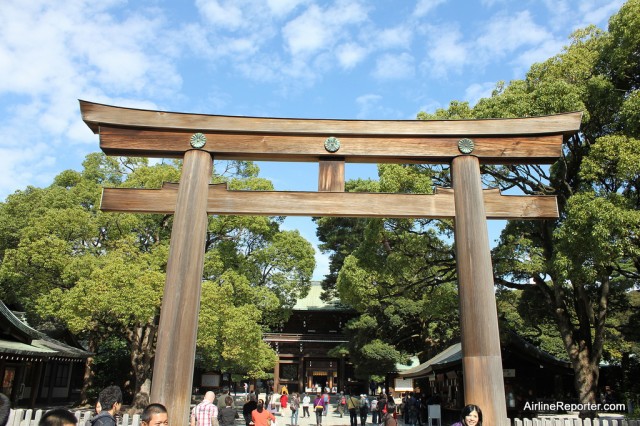
Outside the Meiji Shrine in Tokyo.
Flying to Tokyo, Japan to experience the first flight of the Boeing 787 Dreamliner was only part of the trip. This time I was delighted to be able to experience the fascinating city of Tokyo. A year ago, I flew to Tokyo to check out the Haneda Airport’s new International terminal, and the turn-around trip didn’t allow me time to tour the city. However, this time I was fortunate to stay at the Peninsula Hotel for several days and I want to share what I discovered in this city. Of course my critique is not everything one needs to know about traveling to Tokyo, but a good list for beginner travelers to Japan.
TOKYO IS BACK TO NORMAL AND LOOKING FOR TOURISTS
When talking about visiting Japan, the elephant in the room is the Tsunami that hit on March 11, 2011. The quick answer is that Tokyo is back to normal operations and are welcoming tourists with open arms.
Tourism was hit hard after the Tsunami. The numbers of visitors dropped over 72% in March compared to the March, 2010. Tourism has continued to slip and in September 2011 numbers were down almost 25% compared to 2010.
I thought that I might feel a little guilty when visiting and having fun, due to the tsunami, but quite the contrary; the city and the country make it very clear that it is safe to return to Japan and there are some pretty amazing deals going on right now.
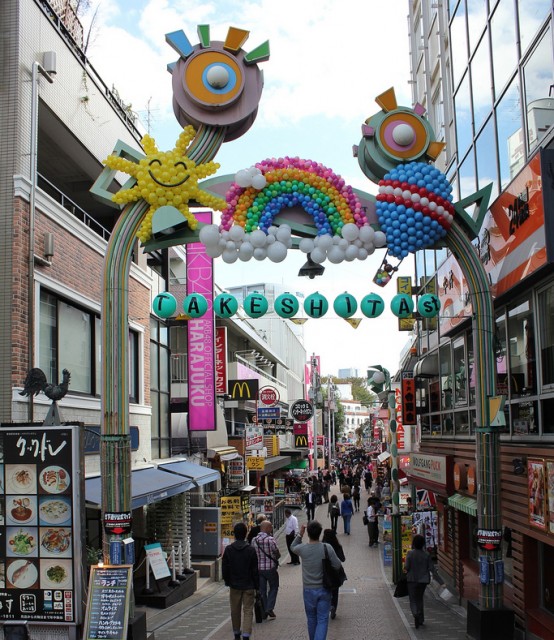
The Takeshita area of Tokyo is for trendy younger folks with some very interesting stores. Not my cup of tea, but interesting to check out none-the-less.
ENGLISH IS NOT AS WIDE-SPREAD AS YOU MIGHT THINK
Although quite a few people in Tokyo do speak English, you can’t count on finding that many English speaking locals. However, I did discover that the younger population is more apt to speak English. In many of the restaurants you can get by with pointing, but for others that might not work, if you don’t have a basic food vocabulary.
There is enough English spoken throughout the city to make your way around, but having a smart phone with a GPS map would be very helpful.
CHOOSE YOUR AIRPORT WISELY
Tokyo has two airports to choose from: Narita (NRT) and Haneda (HND). Historically Narita handles international flights and Haneda operates the domestic travel, but recently that has changed. Typically you will find Haneda is more expensive, but it is located much closer to downtown. It takes about an hour to get from Narita to Tokyo and costs about $40 per person to either take the train or bus (and about $200+ for a cab). I thought flying into the Narita airport and driving into Tokyo would be a worthwhile opportunity to see the Japanese countryside, but, the views are not that great so that experience does not need to be on your “must do” list.
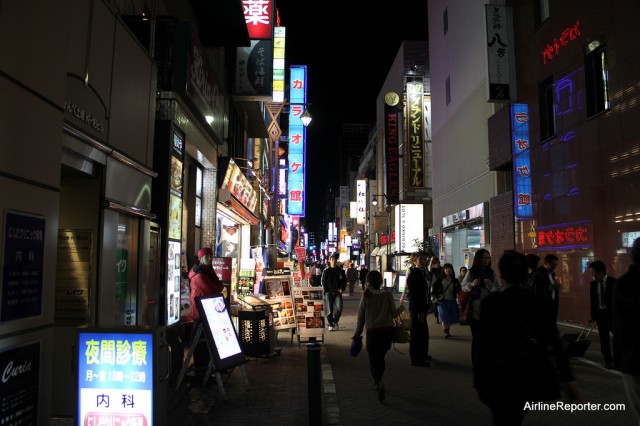
This was one of the many "dark" alleys in Tokyo. However, even walking around by myself at night, I never felt unsafe or unwelcome.
IF YOU LIKE TO SHOP, YOU WILL BE IN HEAVEN
I am not much of a shopper, but the people of Tokyo are. It is a big city, but many people do not have cars and live in small apartments or houses. They have disposable income and a lot of that goes to “stuff.” Unlike many Americans who shop online, seeing stuff in person is much more popular in Tokyo. This means that there are stores for everything. I got to visit a ten story electronics store and was amazed to discover a six story store that only sold paper goods. You will also find designer shops selling Louis Vuitton, Chanel, Gucci and the like.
WALK TO THE LEFT
People drive on the right in the US and many walk to the right as well when passing someone coming or going. When I first got to Japan, I kept running into people and couldn’t figure out why. It took me a bit to realize that not only do the Japanese drive on the left side of the road, but they also walk to the left of other people. Even after realizing my mistake, it took me a while to get the hang of walking on the left and by the time I did, I was heading back to the US and started running into people again. This is not a huge deal, but having a heads-up can help avoid confusion and possible head-on collisions.
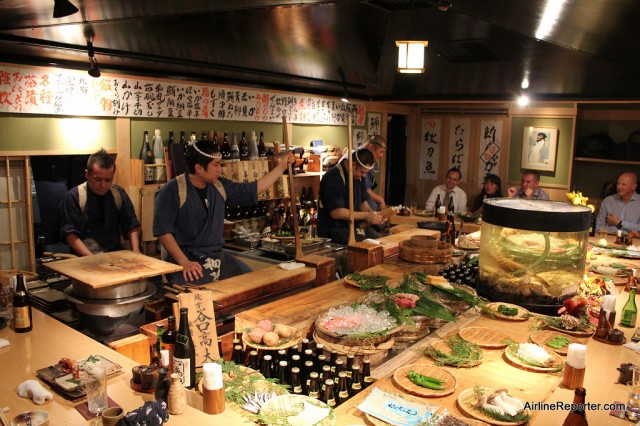
Robataya Restaurant in downtown Tokyo (there is also one in New York) was one of the most amazing meal experiences I have ever had. Great interaction with the Chefs and others that are eating.
A CULTURE OF JOB PRIDE
This is something I partly saw during my last trip, but really saw it during this time. It seems that so many people have a pride in their jobs that you just do not see in the US. From people sweeping up trash to those driving buses, everyone I encountered was nice, professional and clean. For example, in the six story paper store I mentioned earlier there was a woman there whose job was to help people line up for the elevator. This wasn’t some high-end shop, just your run-of-the-mill sort of place. First off in the US, this job would never exist and if it did, the person would most likely be grumpy, hatehis job and make it very clear that he wasn’t happy. “OMG people get in one of the lines, get on the elevator, how hard is this?” In Japan, this woman was polite and she treated her job like it was one of the most important things in the world. It was very refreshing to see this level of service almost everywhere I went.
YOU DO NOT GIVE TIPS, BUT GET AMAZING SERVICE
One might think that people have a pride in their job to get something out of it, like a tip, but that is not the case. Tipping in Japan is seen as a negative thing — almost an insult. Some places will automatically include gratuity on your bill, but people aren’t looking to be rewarded with a bigger tip. Not that I do not mind tipping in the US for good service, but it just seems to be that many times you get sub-par service AND are still expected to tip in the US. Having people treat you with respect and doing their job just makes the experience that much better. Plus you don’t have to worry about how much to tip people or keep bills/coins handy.
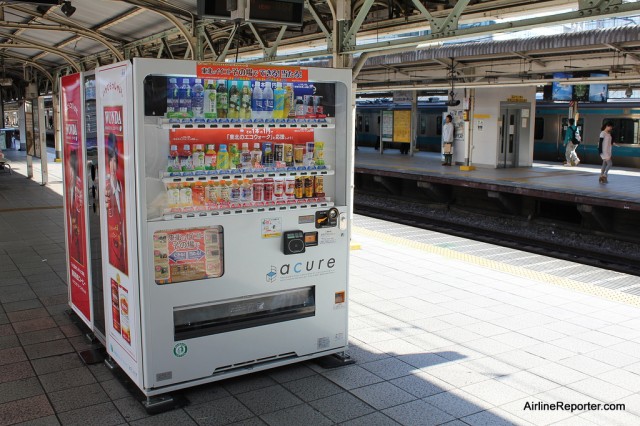
Could you imagine vending machines like this in the middle of a busy downtown train station in the US without being damaged or having big bars on them? It is a very different world in Tokyo.
PEOPLE RESPECT PROPERTY
The city is very clean and vandalism is almost non-existent. One of the first things I noticed was riding in the subway and the seats were cloth — CLOTH! Could you imagine cloth seats in the US? How long would it take for them to get ripped, stained, written on and/or worse? There also wasn’t any graffiti on the public transportation that I saw and none of it smelled of urine — nice. Another thing I noticed were vending machines located almost everywhere around the city. They weren’t locked down with big bars like you see in the US and they all worked.
GETTING AROUND IS EASY – USE PUBLIC TRANSPORTATION
Taxis are quite pricey and the cost can add up quickly. Just going down the street can easily cost about $10. In Tokyo and the surrounding area, there is a great train/subway system to get around and it is best to use them. Public transportation is very clean and safe. It could be a bit challenging figuring out exactly what train to take while at a station, so probably good to plan ahead either on your own or ask your hotel before heading out.
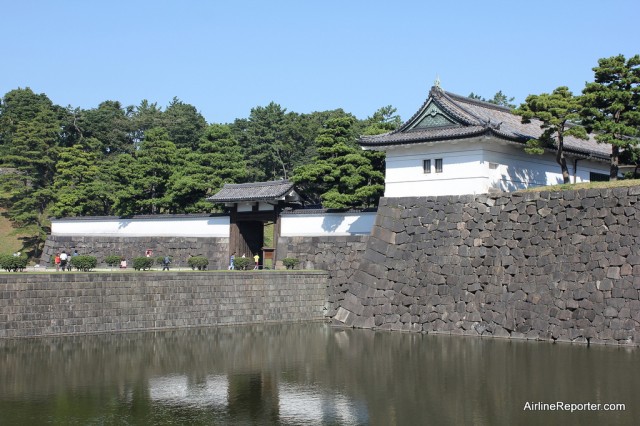
One of the entrances to the Imperial Palace Plaza, which is a large park in the middle of downtown Tokyo and right across from the Peninsula Hotel where I was staying.
CHECK OUT HIBIYA PARK + TOKYO IMPERIAL PALACE
I know Tokyo is a well developed city, but I was expecting to see more traditional Japanese architecture. There were some places that gave a little bit, but it wasn’t until I checked out Hibiya Park that I got what I was really looking for. It is a large park area that is located right in the middle of downtown (almost like Tokyo’s Central Park).
Not only are there a lot of open park grounds, but this is also where the Imperial Palace is located. Unlike the White House in the US, they hide the Palace pretty well. Even from my hotel room, overlooking the park, I was only able to see the roof. Down on the ground, there are a few things to view, but not the actual palace and security is pretty tight.
DO NOT BE SCARED OF THE FACE MASKS
When making your way through Tokyo, you might notice there are quite a few people wearing white face masks. Do not worry — there is not a pandemic. People who are getting sick wear the face masks so that they do not infect others. It can be a little off-setting at first, but with a dense population in Japan, this is done to cut down on the spread of disease. It makes sense and it is too bad that more people around the globe do not do this.
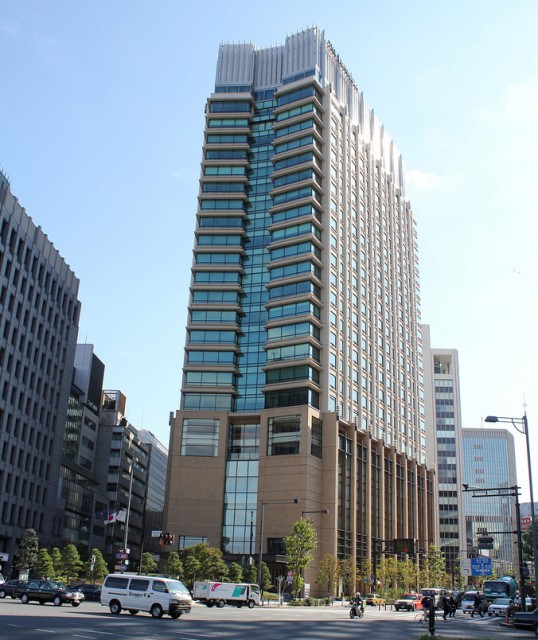
The Peninsula Hotel, where I stayed, which is a five star hotel located right in downtown Tokyo.
STAY AT THE PENINSULA, IF YOU CAN
While in Tokyo, I was staying at The Peninsula Tokyo. Since getting into travel writing, I have been fortunate to experience quite a few first class hotels and this hotel has been one of the best to date. This might be a shocker to most of you, but I am by no means rich and/or famous, so when I travel on my own dime (this trip to Tokyo was sponsored by The Peninsula Hotel and ANA), I am not booking really high-end rooms. However, recently my opinions and thoughts about hotel rooms have changed.
When I was in college, it was about finding the cheapest room possible; I didn’t care what it looked like or where it was located. As I began to explore paying a bit more for nicer hotels and then even a bit more for a better room, I have begun to really appreciate how much a hotel can be a part of your travel experience. Not only are we talking about the quality of sleep you can get (I had my best jet-lagged sleep at the Peninsula to date), but the time you spend in your room. It is pretty nice to wake up and reach over to push a button to have all my curtains open up and (after my eyes got used to the light) seeing Tokyo. It makes one feel like the king of the world and certainly adds an enhanced dimension to your travels.
One of the huge benefits of the hotel is its location — right in the middle of all the action. Luckily I had much free time during my visit and it was easy to leave the hotel and be a short walk from the shopping and important tourist destinations without needing to use transportation. But when I did leave for other parts of the city, it was an easy two block walk to the subway to hitch a ride.
BE PREPARED TO DRESS NICE, EVEN IN LAID BACK SETTINGS
Before leaving, I checked the weather and saw it was forecast to be in the mid-to-upper 60’s. For a Seattlite, that means shorts. I did not want to make the same mistake (of not taking shorts) when I went to Singapore, so I made sure I packed them this time. It never reached the 60’s, and although I would have normally worn shorts anyway, the only people I saw wearing them around Tokyo were the tourists. Most local citizens, even on the weekends, had suits on and were dressed nicely and for some reason to me, it just did not seem right to wear shorts. However, I did wear jeans — I mean I have to have some limits here.
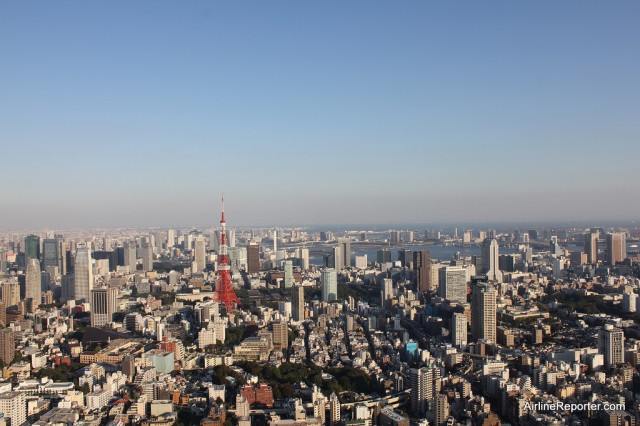
Tokyo is a HUGE city. From every angle, the city just kept going and going. This is the view towards the Tokyo Tower.
CONCLUSION
This was my second trip to Japan and I know it will not be my last. There is something about the people, the culture and the country that is very alluring and welcoming. I am hoping to visit this summer to explore more of Japan outside of Tokyo. The town and country are ready for tourists and if you have been meaning to make your way over to Japan, the timing could not be better.
YOU KNOW YOU WANT MORE
* All my Tokyo, Japan photos
* Photos of The Peninsula Hotel
* Story and photos on flying on ANA’s 787 Dreamliner
* Video of my Boeing 787 flight from Narita
